We’ve received close to 4 feet of snow in the last week, so when I saw The Inspector’s column in this month’s e-NewZone monthly newsletter from The Center for Campus Fire Safety, I asked them if I could share it here. I’m hoping that whoever is responsible for getting our schools back in business and ending the streak of 6 SNOW DAYS IN A ROW reads this…
The Inspector – Baby It’s Cold Outside
By Phil Chandler
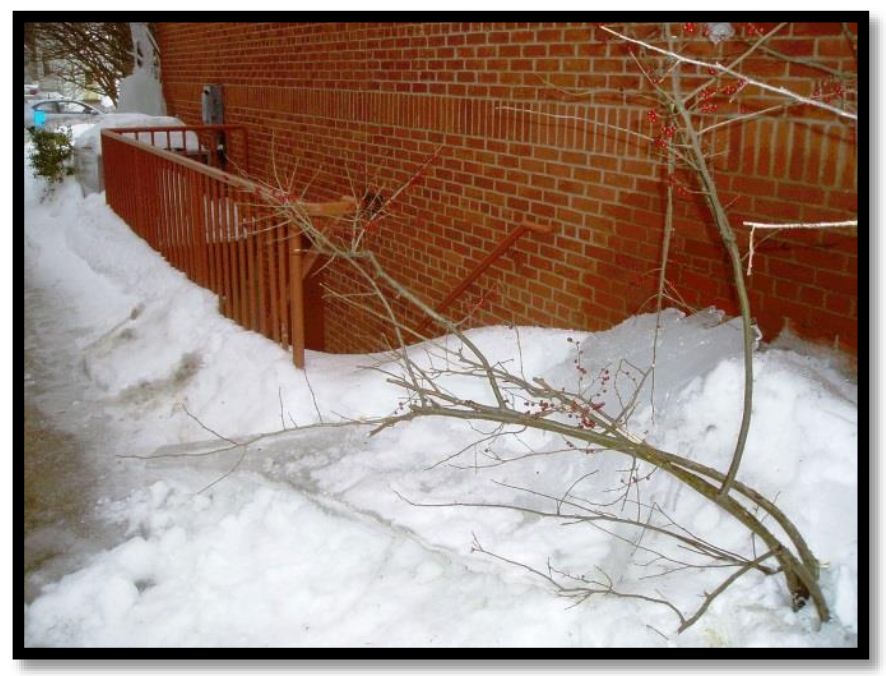 Notwithstanding the raging debate over global warming, I know one thing: For most of us in these 50 states, this will be a winter to remember. In some parts of New York, recent snowfalls have been measured in yards, not feet. Likewise, throughout the country, communities previously exempt from the ravages of winter have had to deal with snow removal for the first time. My first reaction to freaky winter weather is simply put: Big deal. After 61 winters, I’ve personally become pretty inured to humongous snowfalls. However, professionally, I have learned that accumulations of snow in the wrong places represent genuine life safety hazards.
Notwithstanding the raging debate over global warming, I know one thing: For most of us in these 50 states, this will be a winter to remember. In some parts of New York, recent snowfalls have been measured in yards, not feet. Likewise, throughout the country, communities previously exempt from the ravages of winter have had to deal with snow removal for the first time. My first reaction to freaky winter weather is simply put: Big deal. After 61 winters, I’ve personally become pretty inured to humongous snowfalls. However, professionally, I have learned that accumulations of snow in the wrong places represent genuine life safety hazards.
Every college campus I visit deploys all hands to tackle every snow and ice accumulation. Avoiding schedule disruption is the top priority, followed by concerns for public safety – slip and fall accidents are inconvenient and costly. But mainly, the show must go on. It is, therefore, pretty common to see snow plows on the lacrosse field even as walkways and stairs remain untouched.
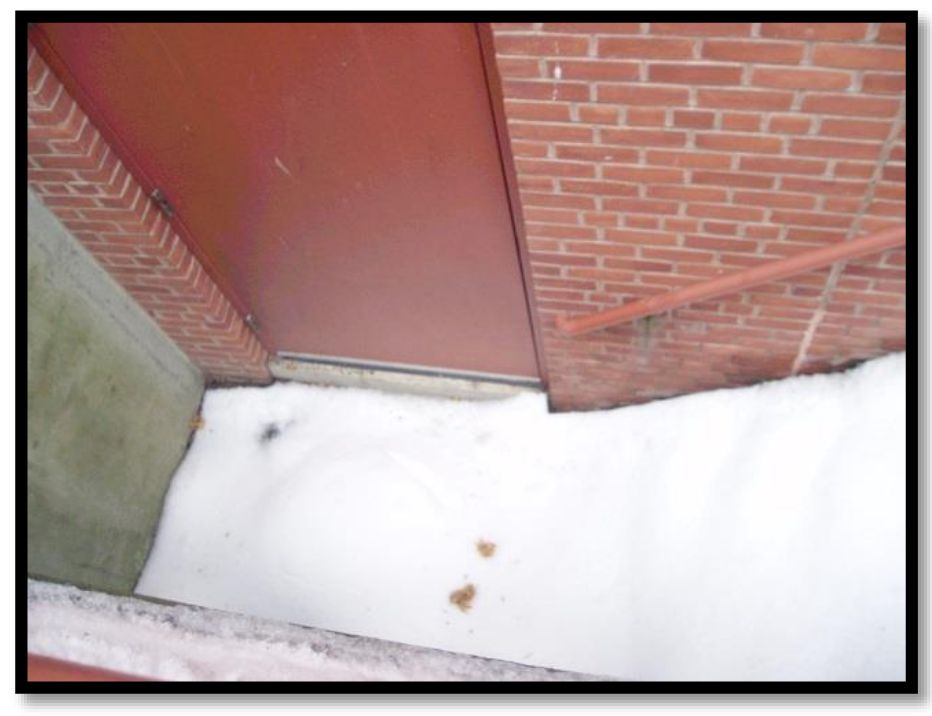 More significantly, even the most comprehensive snow removal operations fail to adequately identify and prioritize removing snow from our paths of emergency egress. It is easy to remove snow from around hydrants; they are clearly visible to all.
More significantly, even the most comprehensive snow removal operations fail to adequately identify and prioritize removing snow from our paths of emergency egress. It is easy to remove snow from around hydrants; they are clearly visible to all.
Likewise, fire department access roads are usually not a problem; after all, they are generally shared roadways and are promptly cleared. But exits – they are a different story.
Many exits, especially those from below grade locations, are simply not on anyone’s map. To the groundskeeper with shovel in hand, there is no way to know that an infrequently used basement stairwell may one day be the only viable way out of a basement auditorium filling with dense black smoke. Grounds staff are simply that, they spend their days in the great outdoors. They cannot be expected to know the varied interior space utilization of campus buildings. For this snow removal crews need to be guided by detailed plans crafted with the significant input of campus fire protection specialists.
Not only do snow removal plans need to identify paths of egress, they need to assign to them the highest priority. Even if classes and sporting events (less likely) are cancelled for the day, there are still people living on campus, and they need to be able to get out  quickly in the event of fire. Let’s not forget, fire does not discriminate. It doesn’t care if a snow day is an inconvenient time for a surprise visit.
quickly in the event of fire. Let’s not forget, fire does not discriminate. It doesn’t care if a snow day is an inconvenient time for a surprise visit.
Speaking of subterranean exits; they need to be on the grounds department radar year round, not just in winter. Even moist leaves at the bottom of the stairwell, while always a slip hazard, become as hard as cement when the mercury drops, preventing the opening of exit doors. They need to be regularly swept, and the drain kept open, always.
Similarly, most buildings have above ground doors that are important means of egress, clearly identified on the inside with signage and egress hardware while completely anonymous on the building exterior. There is nothing about a grey slab door without any hardware on the side of a building that indicates that at any moment 5oo people might emerge, running for their lives. In many instances these doors are rarely touched in a snowstorm. Even if they were to open, where would the surging mob end up? The whole concept of an exit discharge as a safe and unobstructed pathway leading to a public way is not fully understood.
T he above problem was not created by the site services department. Often times building designers fail to give exits the respect they deserve. They may provide a skimpy concrete pad barely larger than the door swing at rear and side exits while omitting a paved surface leading evacuees away from a burning building to an area of safety. Designers often assume that all occupants are young and spry, able to navigate all terrain. They also fail to understand that during a fire, glass and other debris often rain down on everybody near the building. We teach everyone to leave the building at the first hint of smoke and fire and to assemble on the outside, well away from danger. We need to make this a possibility.
he above problem was not created by the site services department. Often times building designers fail to give exits the respect they deserve. They may provide a skimpy concrete pad barely larger than the door swing at rear and side exits while omitting a paved surface leading evacuees away from a burning building to an area of safety. Designers often assume that all occupants are young and spry, able to navigate all terrain. They also fail to understand that during a fire, glass and other debris often rain down on everybody near the building. We teach everyone to leave the building at the first hint of smoke and fire and to assemble on the outside, well away from danger. We need to make this a possibility.
And let us not forget the constant neglect of fire escapes. Not only do we frequently ignore their regular maintenance year round but we especially turn our backs to them in winter. Yes, they are dinosaurs, relics of a bygone era, but nonetheless, where they are found, they are often the only means of escape when smoke and fire fill interior stairwells and corridors.
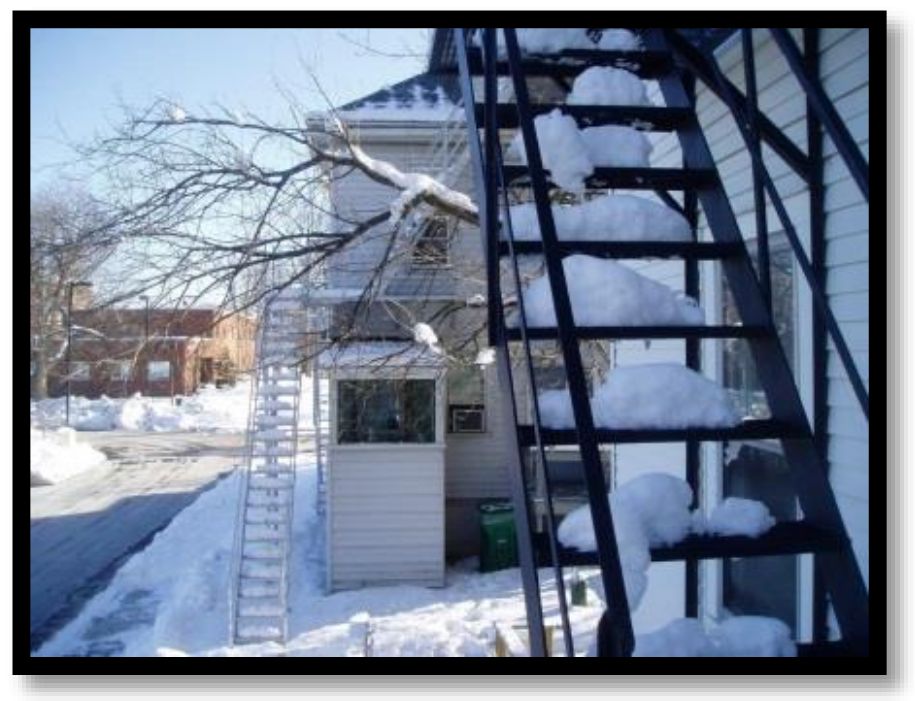 Let’s face it, where do you think the fire might be, next time? In the brand new Type II fully sprinklered building with multiple vertical exit enclosures, or in the 100 year old balloon construction building with multi-generational wiring – you know, the residence halls valued equally by artists and frat members?
Let’s face it, where do you think the fire might be, next time? In the brand new Type II fully sprinklered building with multiple vertical exit enclosures, or in the 100 year old balloon construction building with multi-generational wiring – you know, the residence halls valued equally by artists and frat members?
Baby it’s cold outside! But we can’t let a long and harsh winter cause us to lose sight of our number one priority on the campus: Assuring that everyone graduates – and gets to go home. If we are to be successful in our mission, it will only be if we guarantee that there are always two ways out of every emergency.
Phil Chandler is a long time firefighter and a fulltime government fire marshal working extensively in the college environment – from large public university centers to small private colleges.
His primary responsibilities include code enforcement and education. Phil welcomes your comments, thoughts and opinions (whether in agreement or opposition) to his viewpoints. He may be reached at: theinspector@campusfiresafety.org.
Ask the Inspector: Now members of the Center for Campus Fire Safety can log onto the Member Website and have an online discussion with “The Inspector.”
Simply visit the MEMBER LOGIN section of the CCFS public website. Once logged in, look for the Town Hall Discussions and ask “The Inspector.”
Note: The viewpoints expressed in The Inspector are those of the author alone. They are offered to initiate thought and debate, however, they do not necessarily represent the views or opinions of The Center for Campus Fire Safety, its officers, directors or its editorial staff.
You need to login or register to bookmark/favorite this content.

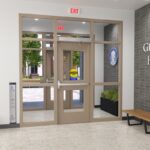

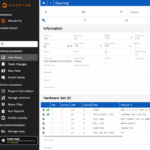

Good to see someone shine some light on these oft ignored areas
Around here that is just another day at the office, our grounds team does a great job.
It’s 70 degrees right now in Las Vegas.
That is cruel. 😉
This was one of my pet peeves at my last job. No one cleared the below-grade exits.
There were always leaves in the Fall & early Winter; snow & ice all Winter long; and flooded exterior stairwells in Spring & Summer due to clogged drains.
To add insult to injury, the housekeeping staff routinely dumped mopbuckets of dirty water and stripped wax in the exterior stairwell drains (it was easier than going another few feet to the Porter’s Closets that were all equipped with floor-level drain basins). The wax would congeal in the bottom of the stairwell enclosure making it incredibly slippery, and would clog the drain so that there was always some standing water/wax mix there.
Numerous complaints to the Fire Safety Officer, but still the problems persisted.
That’s why I live on the Gulf Coast! I’ve heard of snow……